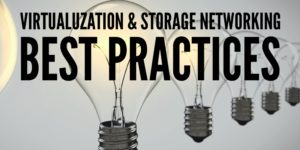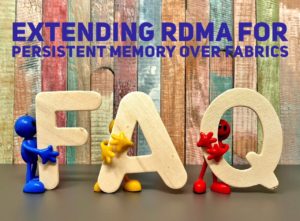
Barry Kittner, Technology Initiatives Manager, Intel and SNIA Storage Management Initiative Governing Board Member
To understand Swordfish, let’s start with the basics to examine how modern data centers are managed.
A user of a PC/notebook is assumed to be in control of that PC. What happens when there are two? Or 10? Or 1,000? Today’s modern data centers can have 100,000 computers (servers) or more! That requires the ability to be in control or “manage” them from a central location. How does one do that? It is done via a protocol that enables remote management; today that standard is IPMI, an acronym for Intelligent Platform Management Interface, and which has existed for 20 years. Among issues with IPMI is that the scale of today’s data centers was not fully envisioned 20 years ago, so some of the components of IPMI cannot cover the tens of thousands of servers it is expected to manage. The developers also did not foresee the stringent security and increased privacy requirements expected in modern data centers.
The DMTF created, and continues to improve upon, a modern alternative standard for remote or centralized management of data centers called Redfish®. For those familiar with server management, Redfish is referred to as “schema-based,” meaning that engineers have carefully organized many different categories of information as well as the relationships between them. Schema are structured to manage the millions of bits of information and operating characteristics that data centers create and report on a continuous basis and that managers monitor to understand the status of the datacenter. In this way, information on the operational parameters of the machines in the data center is provided, when and where needed, in a consistent, organized and reliable way.
Unlike IPMI, the new Redfish standard uses modern tools, allowing it to scale to the size of today’s modern data centers. Redfish has output language readable by datacenter operators, works across the wide variety of servers and datacenter equipment that exists today, and is extensible for the new hardware of tomorrow.
The Storage Networking Industry Association (SNIA) is a global non-profit organization dedicated to developing standards and education programs to advance storage and information technology. SNIA created the Storage Management Initiative Specification (SMI-S) currently in use in datacenters to manage interoperable storage. SNIA immediately recognized the value of the new Redfish standard and created SNIA Swordfish , which is an extension to Redfish that seamlessly manages storage equipment and storage services in addition to the server management of Redfish. Just as most PC’s have one or more storage devices, so do most servers in datacenters, and Swordfish can manage storage devices and allocation across all of the servers in a datacenter in the same structured and organized fashion.
, which is an extension to Redfish that seamlessly manages storage equipment and storage services in addition to the server management of Redfish. Just as most PC’s have one or more storage devices, so do most servers in datacenters, and Swordfish can manage storage devices and allocation across all of the servers in a datacenter in the same structured and organized fashion.
A summary and additional information for the more technical readers is below. If you want to learn more, all the items underlined and in bold below yield more information. You can click them, or type them into your internet browser for more information on the terms used in this tutorial:
- For security, Swordfish employs HTTPS, a well-known and well-tested protocol that is used for secure communications over the World Wide Web.
- JavaScript and ODATA increase the readability, compatibility and integration of RESTful API’s that manage data collected from datacenter devices and covers a range of information useful for beginners through experienced engineers.
- Interoperability exists due to the use of a common schema definition language (CSDL) and common APIs from eco-system partners including the Open Compute Project (OCP).
- Redfish and Swordfish were created and are maintained by industry leaders that meet weekly to tune and extend management capabilities. (See DMTF.ORG, SNIA.ORG)
- These schema work together to allow full network discovery, provisioning, volume mapping and monitoring of block, file and object storage for all the systems in a modern datacenter.
There is so much to learn beyond this brief tutorial. Start at DMTF.ORG to learn about Redfish. Then surf over to SNIA.ORG/SWORDFISH to see how Swordfish brings the benefits of schema-based management to all your storage devices. You will learn how Swordfish works in hyperscale and cloud infrastructure environments and enables a scalable solution that grows as your datacenter requirements grow.
By Barry Kittner, Technology Initiatives Manager, Intel and SNIA Storage Management Initiative Governing Board Member
 Ever make a mistake configuring a storage array or wonder if you’re maximizing the value of your virtualized environment? With all the different storage arrays and connectivity protocols available today, knowing best practices can help improve operational efficiency and ensure resilient operations. That’s why the SNIA Networking Storage Forum is kicking off 2019 with a live webcast “Virtualization and Storage Networking Best Practices.”
In this webcast, Jason Massae from VMware and Cody Hosterman from Pure Storage will share insights and lessons learned as reported by VMware’s storage global services by discussing: Read More
Ever make a mistake configuring a storage array or wonder if you’re maximizing the value of your virtualized environment? With all the different storage arrays and connectivity protocols available today, knowing best practices can help improve operational efficiency and ensure resilient operations. That’s why the SNIA Networking Storage Forum is kicking off 2019 with a live webcast “Virtualization and Storage Networking Best Practices.”
In this webcast, Jason Massae from VMware and Cody Hosterman from Pure Storage will share insights and lessons learned as reported by VMware’s storage global services by discussing: Read More
 Ever make a mistake configuring a storage array or wonder if you’re maximizing the value of your virtualized environment? With all the different storage arrays and connectivity protocols available today, knowing best practices can help improve operational efficiency and ensure resilient operations. That’s why the SNIA Networking Storage Forum is kicking off 2019 with a live webcast “Virtualization and Storage Networking Best Practices.”
In this webcast, Jason Massae from VMware and Cody Hosterman from Pure Storage will share insights and lessons learned as reported by VMware’s storage global services by discussing: Read More
Ever make a mistake configuring a storage array or wonder if you’re maximizing the value of your virtualized environment? With all the different storage arrays and connectivity protocols available today, knowing best practices can help improve operational efficiency and ensure resilient operations. That’s why the SNIA Networking Storage Forum is kicking off 2019 with a live webcast “Virtualization and Storage Networking Best Practices.”
In this webcast, Jason Massae from VMware and Cody Hosterman from Pure Storage will share insights and lessons learned as reported by VMware’s storage global services by discussing: Read More
 In our most recent SNIA Networking Storage Forum (NSF) webcast
In our most recent SNIA Networking Storage Forum (NSF) webcast 





